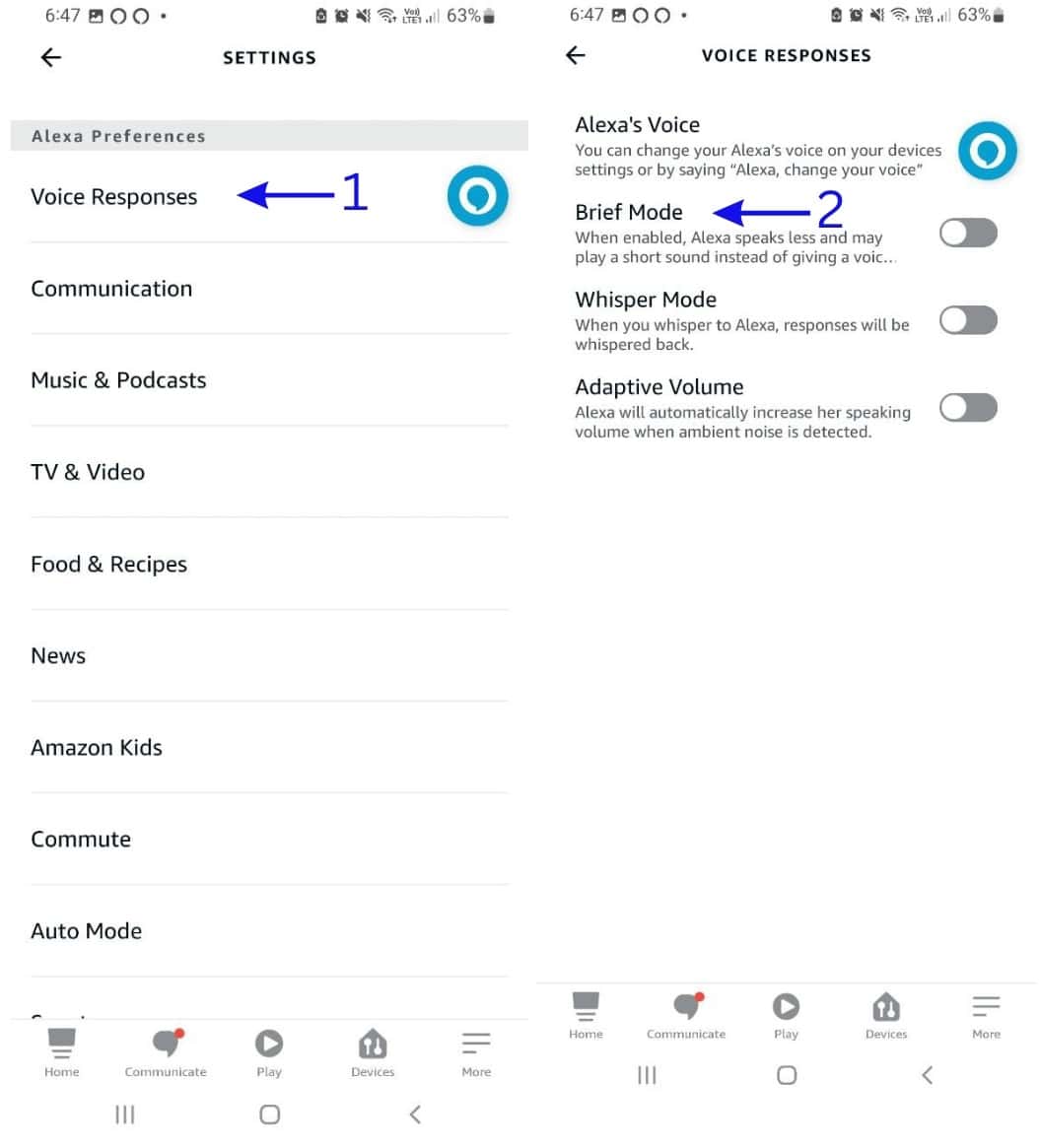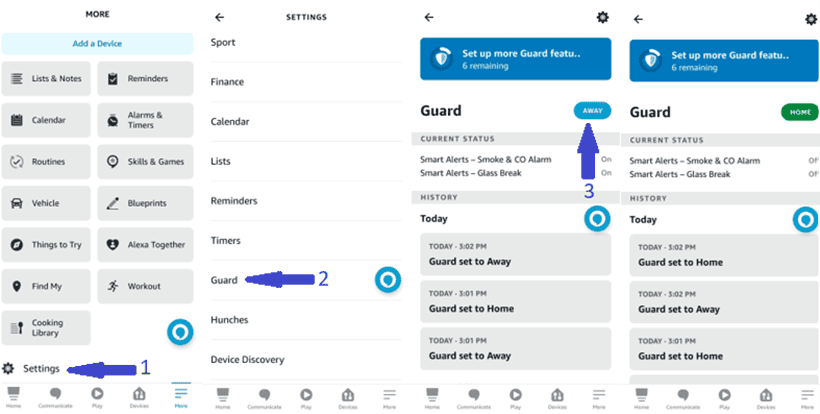While Echo devices are sophisticated enough to help us manage our home systems, they aren’t above making the occasional error.
Alexa can bug out and make weird noises at times. These can range from anything between random static, obnoxious beeping, and misplaced responses for requests you didn’t even make! What exactly causes this oddity, and how can you get Alexa to stop with all the weird noises?
There are a ton of different reasons why Alexa makes weird noises, but the time of noise made is your first clue to the nature of your Echo device’s problem.
-
- If you’re hearing static, something is disrupting Alexa’s intended performance – it’s likely to be radio interference, compromised hardware, or buggy software.
- If you’re hearing beeps, it means Alexa is telling you something – it’s often a sign of low power, false wakes, Bluetooth pairings, routines, or certain active Alexa modes.
- If Alexa is speaking to you for no apparent reason, it’s most likely being activated by background noises (“false wakes”) and then interpreting what follows as a command.
Alexa can make weird noises for a number of different reasons, but we’ve compiled a brief list of the more common ones below – along with the most effective way to handle each of them.
-
Low Power Level
Should power on your Echo device fall below a certain threshold, Alexa will beep to warn you. It’ll do so twice per minute until the device either shuts down or links up to a power source.
The chance of this being the issue is actually pretty low, as most Echo devices don’t have batteries at all – they can’t be used unless you have steady power available! Even Echo devices that support battery bases (or use batteries) will likely spend most of their time plugged into a wall socket.
You’ll only be dealing with this if you’re using Alexa on the go, so simply be mindful and keep your battery base plugged in and topped off on power before traveling!
-
Radio Interference
Alexa makes use of radio waves to interact with Amazon’s cloud-based server, allowing it to process and respond to inquiries in real-time. If there’s a nearby device that emits radio waves, it could disrupt this communication process and cause Alexa to make weird static noises.
Alexa might also beep from this if the distorted signal is interpreted as a wake word, but it’s rare. Most of the time you’ll only be dealing with intermittent static and poor Alexa responsiveness.
If you’re worried about radio interference, try keeping your Echo devices far from disruptive elements like complex electronics and metal objects. Be especially wary of baby monitors, microwave ovens, and cordless phones, as these operate on the same frequency band (2.4 GHz) Alexa uses to interface with other devices.
-
Physical Damage or Defective Hardware
Alexa might make weird noises due to hardware problems. This can manifest in two key ways. A broken microphone makes it harder for Alexa to understand voice requests, leading to misunderstood commands or unintentional activations. A broken speaker affects audio quality, causing distortion or even static noises on Alexa.
If you suspect that your Alexa has damaged or defective hardware, get it fixed at a service center as soon as possible. The issue might not seem serious now, but it’ll only worsen if left unattended.
-
Software Bugs
Alexa’s weird noises could also be caused by software glitches. This could cause your Echo to make random beeping noises or struggle to understand basic requests.
Most software problems can be addressed by restarting your device – for Alexa, it’s as simple as unplugging and reconnecting the power cable!
To reduce the likelihood of this happening, you’ll want to ensure that your Echo device is updated to its latest version. Thankfully, Alexa is set to do so automatically with default settings.
-
Unintended Activations
Sometimes, Alexa mistakes background noises for its wake word, which can cause false wakes. These false wakes are accompanied by a solid blue bar and a sharp sound cue that’s pretty irritating if you didn’t intend to activate Alexa. False wakes are more likely to happen if your wake word – or words close to it – come up in background conversation often.
The default wake word is “Alexa”, but you can change it for these options:
-
- Echo
- Ziggy
- Amazon
- Computer
We’ve set our own preferred wake word to “Amazon”, as it’s a three-syllable word that’s hard to misinterpret and unlikely to come up in normal conversation (unlike “Computer”).
-
Background Bluetooth Pairings
Bluetooth could be the cause of your Alexa’s weird noises, as an audible chime will play to indicate successful pairings. If you’ve connected a device to Alexa through Bluetooth, there’s a chance that your Echo will automatically link to that device in the future. This is caused by a specific toggle setting “Automatic Bluetooth Pairing” available on later-generation Echo devices.
The good news is that this setting isn’t enabled on Alexa by default, but if you’d like to confirm it for yourself all you need to do is follow the guidelines below.
-
- On the Alexa App, go to “Echo & Alexa” to choose a specific device.
- Go to “Device Settings”, then click on “Bluetooth Devices”.
- If your device supports it, tap on the “Settings” icon on the upper right.
- If you don’t see the option, stop here – Alexa will never automatically pair.
- Toggle “Automatic Bluetooth Pairing” off.
Note that this change will only apply to the Echo device you’re currently modifying. You may encounter this with other Alexa units in your household, but that’s pretty unlikely – most people only enable Automatic Bluetooth pairing for the Echo device they use the most.
-
“Brief Mode” Active
“Brief Mode” is a setting that drastically shortens the duration of Alexa’s verbal responses.
If you asked Alexa a question that’d have a long response, it would try to condense the relevant information in the most concise way possible. For example, instead of saying the usual “Okay, I’ve done [X].” your unit would just let out a quick beep to confirm it heard you.
Here’s how you can disable “Brief Mode” from the Alexa App:

-
- Tap “Settings”, then go to “Voice Responses”.
- Toggle “Brief Mode” off.
Brief mode is good to enable if you’re tired of hearing long-winded replies from Alexa. Its responses may be curt, but Brief mode won’t affect Alexa’s ability to interpret requests.
-
“Guard Mode” is set to Away
Alexa’s weird noise problems might be due to “Guard Mode” being enabled. If “Guard Mode” is the culprit, you’ll be able to tell thanks to one very distinct feature: the double beep.
“Guard Mode” notifies users with a unique double beep sound effect. This was selected specifically due to how attention-grabbing it would be for both homeowners and intruders, but false triggers would understandably leave a sour impression on most users.
If you toggle “Guard Mode” to “Home”, you’ll still be kept in the loop on your home’s security situation – but you won’t have to worry about Alexa making weird noises.
Here’s how to access it from the Alexa App.

-
- After opening your Alexa app, go to “Settings”.
- Find “Guard”.
- Toggle “Away” to “Home” mode!
You can actually turn the double beep off on its own, but doing so would remove the audio cue entirely – making it less than ideal for a smart home security system! We personally find it much simpler to toggle “Home” mode on your Alexa units.
-
Routines (Especially Volume Adjustments!)
Alexa devices have access to a feature called “Routines”, allowing you to schedule and automate tasks for Alexa to handle. These provide great quality-of-life improvements, but one specific routine is notorious for frustrating thousands of Alexa users nationwide: volume adjustment.
Volume adjustment routines work by setting a specific time for your Echo device to alter its volume. This will be signified by a loud beep which will unfortunately match the adjusted setting.
If your Alexa is making these weird noises at odd times, you’re probably dealing with a discreet volume adjustment routine making itself a nuisance.
Here’s how to confirm it for yourself:
-
- Open your Alexa App.
- Tap the “More” tab.
- Select “Routines”
- Look through all your pre-existing routines for the outlier.
- Delete that specific routine.
If you’d follow better with a video guide, we’ve got you covered!
(Create/Delete routines)
Final Thoughts
While it’s normal to see your Alexa making weird noises from time to time, the type of noise made can tell you everything you need to solve the problem. Static means a device malfunction or radio interference, random beeps tell you it’s a setting you have to adjust on the Alexa app, and misplaced voice responses indicate your Alexa device has a problem with false activations.


